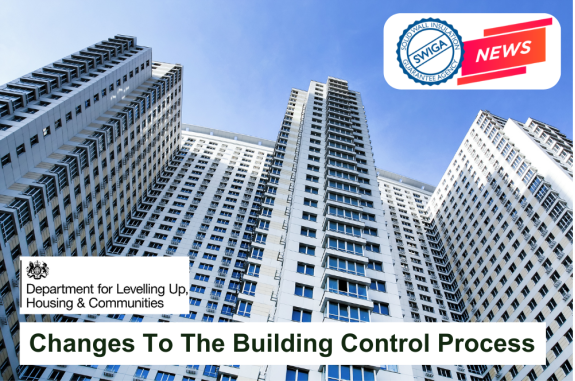SWIGA NEWS
Latest Industry News
Changes To The Building Control Process

Building Control Process - Important Information
The Department for Levelling Up,Housing & Communities recently (in 2023) published the following regulations under Part 3 of the Building Safety Act 2022:- The Building (Higher-Risk Buildings Procedures) (England) Regulations 2023
- The Building Regulations etc. (Amendment) (England) Regulations 2023
- The Building (Approved Inspectors etc. and Review of Decisions) (England) Regulations 2023
- The Building Safety Act 2022 (Consequential Amendments etc.) Regulations 2023
- The Building Act 1984 (Commencement No. 3) (England) Order 2023
- The Building Safety Act 2022 (Commencement No. 5 and Transitional Provisions) Regulations 2023
These regulations deliver the recommendations set out by Dame Judith Hackitt in her Building a Safer Future report and cover the technical detail underpinning the new, more stringent regime for the design and construction of higher-risk buildings and building work carried out in these buildings, wider changes to the building regulations for all buildings and the creation of a regulated building control profession.
The regulations can be found here: The Building Safety Act: secondary legislation
Higher-Risk Buildings Procedures
The Building (Higher-Risk Buildings Procedures) (England) Regulations 2023 introduce a new building control process for building work creating, or in, higher-risk buildings, which is to be overseen by the Building Safety Regulator (“the Regulator”). The new building control process will apply to multi-occupied residential buildings, hospitals and care homes that are at least 18 metres in height or have at least 7 storeys. The Building Safety Act 2022 and the Higher-Risk Buildings (Descriptions and Supplementary Provisions) Regulations 2023, set out the use criteria and how height and number of storeys are determined for the purpose of defining whether these regulations apply.The Building Regulations etc. (Amendment) (England) Regulations 2023 make changes to building regulations that will apply to all building work, to raise standards across the built environment. Legal responsibilities will be placed on those who commission building work, participate in the design and construction process and carry out the building control function, to make sure building work is compliant with building regulations.
The Building (Approved Inspectors etc. and Review of Decisions) (England) Regulations 2023, make amendments to the Building (Approved Inspectors etc.) Regulations 2010 to begin to implement the changes introduced by the Building Safety Act 2022 and support the new building control regime. This will introduce changes to improve accountability and competence, such as establishing a regulated building control profession. This includes setting out the length of time of registration for registered building control approvers and registered building inspectors.
Together these regulations will fundamentally reform the way buildings are designed and constructed, and how building work is carried out, delivering lasting building safety reform for generations to come. It's therefore important information to digest - SWIGA recomend that the circular letter be downloaded and studied in detail.
Categories:
News
